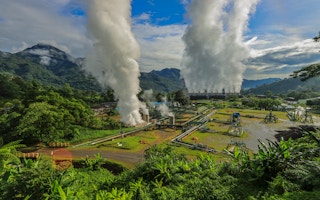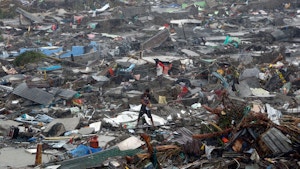At the Philippines’ first renewable energy (RE) auction held in June 2022, solar power plants cornered three-fourths of the 1.966GW of capacity that was up for grabs. Power generators that use wind technology snatched the second biggest share – around 19 per cent – in the tender that paved the way for electricity producers that use clean energy to secure 20-year supply contracts, while hydro and biomass facilities took what remained.
Power produced from geothermal energy was excluded from the maiden auction. Former Energy Secretary Alfonso Cusi, under whose term the annual bidding process was finally kickstarted, said this was because different terms of reference were being drafted for auctioning capacity from geothermal, which is classified as a mature technology, as opposed to emerging technologies.
But even as solar and wind technologies are increasingly popular as they are cheaper to build, geothermal – which has a long history in the country – continues to dominate the green energy sector in the Philippines.
Data from the Philippine Energy department shows that geothermal power plants, which run as baseload facilities – those that operate continuously, barring any scheduled maintenance or repairs – produced 10,681 gigawatthours (GWh) of electricity in 2021, accounting for 45 per cent of RE facilities in the country for the year. Hydropower plants, which are vulnerable to droughts, produced about 39 per cent, while biomass yielded about 5 per cent. Solar and wind, which are weather and location dependent, contributed a little over 12 per cent.
“
Companies that have shifted to RE have claimed that they immediately felt the savings in their electricity bills. Further, those that get their power requirements from geothermal are maximising this benefit because it is baseload, thus, available at all times, clean and renewable, unlike coal.
Atty. Allan V. Barcena, AVP and head of corporate relations and communications, Energy Development Corporation
“This speaks of the inherent capability of geothermal to provide stable, reliable clean power 24/7 versus other RE sources that…yield less power because they are intermittent or dependent on weather conditions or on the time of day,” said Allan V. Barcena, assistant vice president and head of corporate relations and communications at Energy Development Corp. (EDC). EDC is the biggest geothermal power producer in the Philippines.
For four and a half decades, heat from the core of the earth has been the most reliable form of clean energy in the country, which sits on the Pacific Ring of Fire. The Philippines started to use geothermal energy for power generation in 1977 and became the world’s second largest producer in 1983.
In 2018, however, Indonesia overtook the Philippines, which now settles in the third spot.
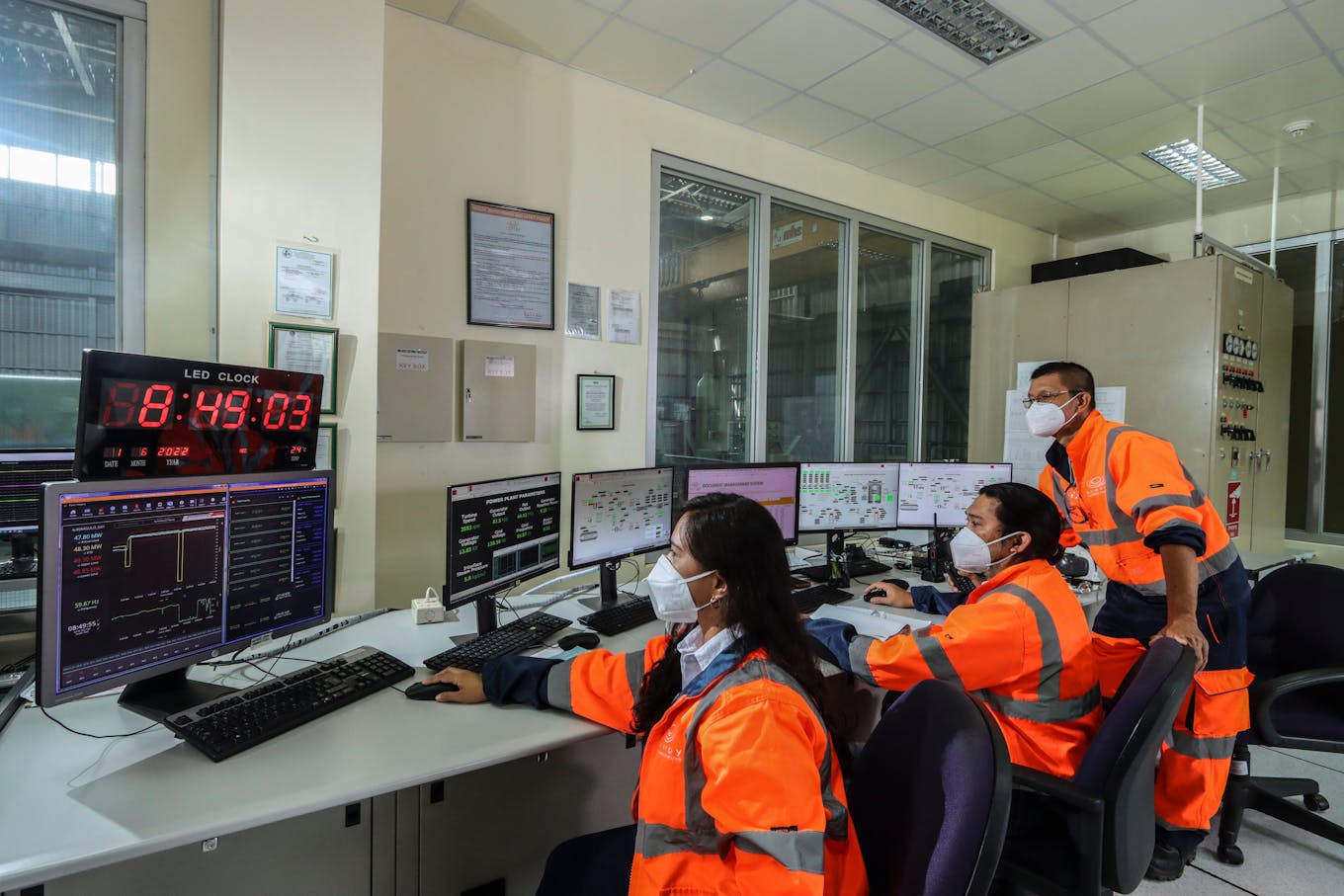
One of the control rooms at EDC’s Palinpinon Southern Negros Geothermal Plant. Image: EDC
The Philippines was overtaken partly due to the slowdown in building new geothermal-fired power plants in the country. The latest iteration of the Philippines’ Power Development Plan (PDP) indicates that as of September 2020, no additional capacity has been committed for geothermal energy. This is despite an April 2020 paper presented by the Philippine government at the World Geothermal Congress stating that given the country’s geothermal resources of around 4,000 MW and actual installed capacity of 1,928MW, at least 50 per cent of the resources can still be developed.
From contributing 13 per cent of the total power generated in the Philippines in 2019, geothermal energy is expected to reduce its share to 8 per cent in 2030 and 4 per cent in 2040.
“Geothermal energy development has been relatively stagnant for the past decades attributed, in part, to the high cost of exploration and pre-development activities,” the National Renewable Energy Program 2020-2040 reports.
It notes that exploratory drilling costs approximately US$6 million per well, with only a 20 to 30 per cent chance to be viable for development.
“Several geothermal service contracts were terminated because local project developers were unable to conduct exploratory activities primarily due to cost constraints and risk issues,” the report cites.
EDC, which accounts for 61.3 per cent of the country’s total installed geothermal capacity through its brand Geo 24/7, acknowledges the challenges in geothermal energy development and the need for other sources of clean energy to contribute to green power production.
“Geothermal also has setbacks such as high upfront costs, high exploration risks,” Barcena said. “It is site-specific, and the current total installed capacity is not enough to supply the country’s total power demand so we still need all the other sources of RE to complement geothermal.”
But EDC also points out that geothermal power’s levelised cost of electricity (LCOE) – or the price at which a power plant needs to sell the electricity it generates in order to cover its construction and production costs during its lifetime – is comparable to some RE technologies.
Based on 2020 figures from the International Renewable Energy Agency (IRENA), geothermal plants need to earn 7.1 US cents/kwh to break even at the end of their operations – less than offshore wind’s LCOE of 8.4 US cents/kwh and 7.6 US cents/kwh for biomass. Onshore wind power generators, however, only need to sell electricity for 3.9 US cents/kwh to break even, while hydropower plants need to sell electricity they generate for 4.4 US cents/kwh. Solar power plants need to sell electricity for 5.7 US cents/kwh to recover the cost of building and running their systems.
“If you add the benefit of higher capacity factor, then geothermal has a significant advantage,” noted Joeffrey A. Caranto, assistant vice president and head of EDC’s Field Development Planning Division. He is also president of the National Geothermal Association of the Philippines and chairman of the International Geothermal Association Asia Pacific.
A power plant’s capacity factor measures how much actual electricity it produces over a certain period in relation to its maximum possible output. IRENA figures show that geothermal plants have the highest capacity factor among RE technologies at 83 per cent, followed by biomass at 70 per cent. Other renewable energy sources have capacity factors of less than 50 per cent, with solar plants being the least optimal at 16 per cent.
The government has been looking for ways to revive interest in geothermal power. Among them is the move to allow foreign ownership of large-scale geothermal projects, subject to certain conditions, the NREP states.
“
With the new administration’s declaration that it will prioritise renewable energy, we hope more investors will be encouraged to go into RE not only because it’s good business but also because it is good for our country and for the environment.
This aligns with the national policy of encouraging investments in new or additional renewable power plants as the Philippines transitions to using more clean energy to meet its climate goals and to lessen its exposure to price shocks.
From a 21-per cent contribution to power generation in 2020, the country is targeting to bring back the share of renewable energy to 35 per cent by 2030, or closer to its levels in 2008, when it contributed 34 per cent. By 2040, it aims to further raise the share of clean fuel sources to 50 per cent.
The government touts the transition towards indigenous and renewable energy sources as a way of lowering electricity charges — which will be welcome news for consumers. Data from GlobalPetrolPrices.com show that as of December 2021, electricity rates for households in the Philippines stood at 16.4 US cents/kwh – higher than the global average of 13.8 US cents/kwh – while those for business were at 12.1 US cents/ kwh, slightly lower than the world average of 13.1 US cents/ kwh. Among member states of the Association of Southeast Asian Nations (ASEAN), these prices are second only to Singapore’s 18.7 US cents/kwh for households and 15.9 US cents/ kWh for businesses.
The expensive electricity in the country is partly due to its heavy dependence on imported fuels to generate power, which exposes it to fluctuations in world prices. Based on the PDP, 71 per cent of the country’s installed capacity came from plants that run on fossil fuels – coal, oil and natural gas – as of 2020, while 29 per cent were from clean energy facilities. In terms of power generated that year, a whopping 57 per cent was accounted for by coal alone.
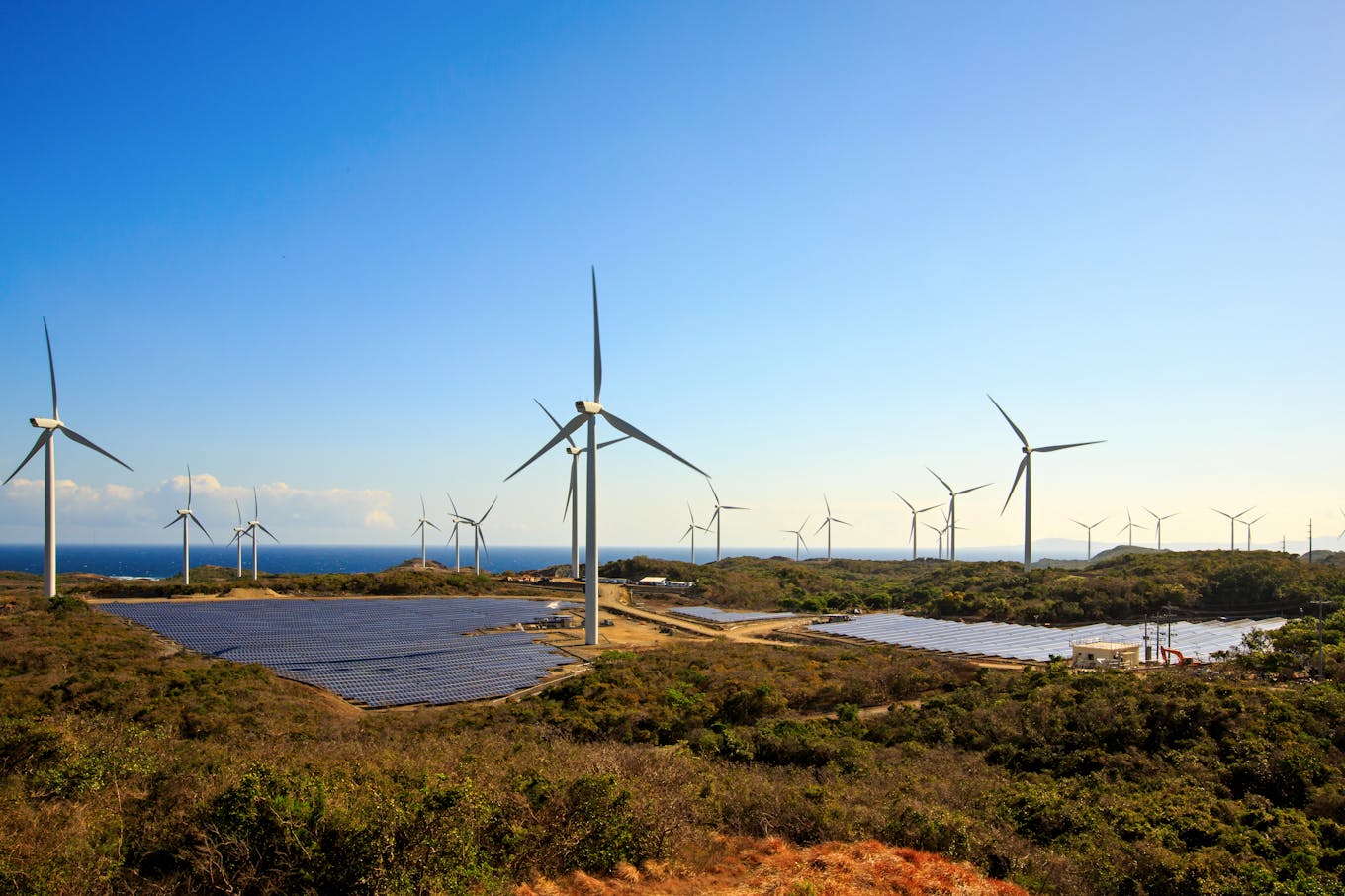
EDC’s 680-hectare combined wind and solar farm in Burgos, Ilocos Norte. Image: EDC
The aim of having a bigger portion of the power sold in the country sourced from indigenous fuel, however, will only be realised years ahead; meanwhile, world events are causing the prices of imported fuel to rise. These indicate that households that get their power needs from the grid are not likely to see their electricity bills reduced anytime soon.
“RE won’t really be able to primarily steer the country away from increasing power rates in the Philippines at this point”, Barcena asserted.
But he also noted that big electricity users that are allowed to choose their power suppliers “are already feeling the effects of stable and relatively predictable prices of RE”.
“Those that have shifted to RE have claimed that they immediately felt the savings in their electricity bills,” he said.
Still, questions have been raised on whether the Philippines is doing enough. Bain & Co and Temasek, in a report called Southeast Asia’s Green Economic 2022, have pointed out that the country is lagging behind regional peers in promoting renewables, saying that it has “few concrete plans or policies” for the development of green energy.
Data from the ASEAN Centre for Energy released in September 2021 show that the 29-per cent contribution of clean energy to Philippine installed capacity is among the lowest in the region, trailing Laos (83.4 per cent), Vietnam (55.8 per cent), Cambodia (54 per cent), Myanmar (49.4 per cent), and Thailand (30.3 per cent).
While the country fared better than Brunei – which hardly uses renewables (clean energy accounted for only 0.2 per cent of its power needs during the period) – Singapore (4.3 per cent), Indonesia (14.8 per cent), and Malaysia (24.6 per cent), three of the four economies are petrostates, making them less vulnerable to spikes in world prices. Further, Indonesia, which sources the bulk of its power from coal, is also one of the biggest producers and exporters of the fuel.
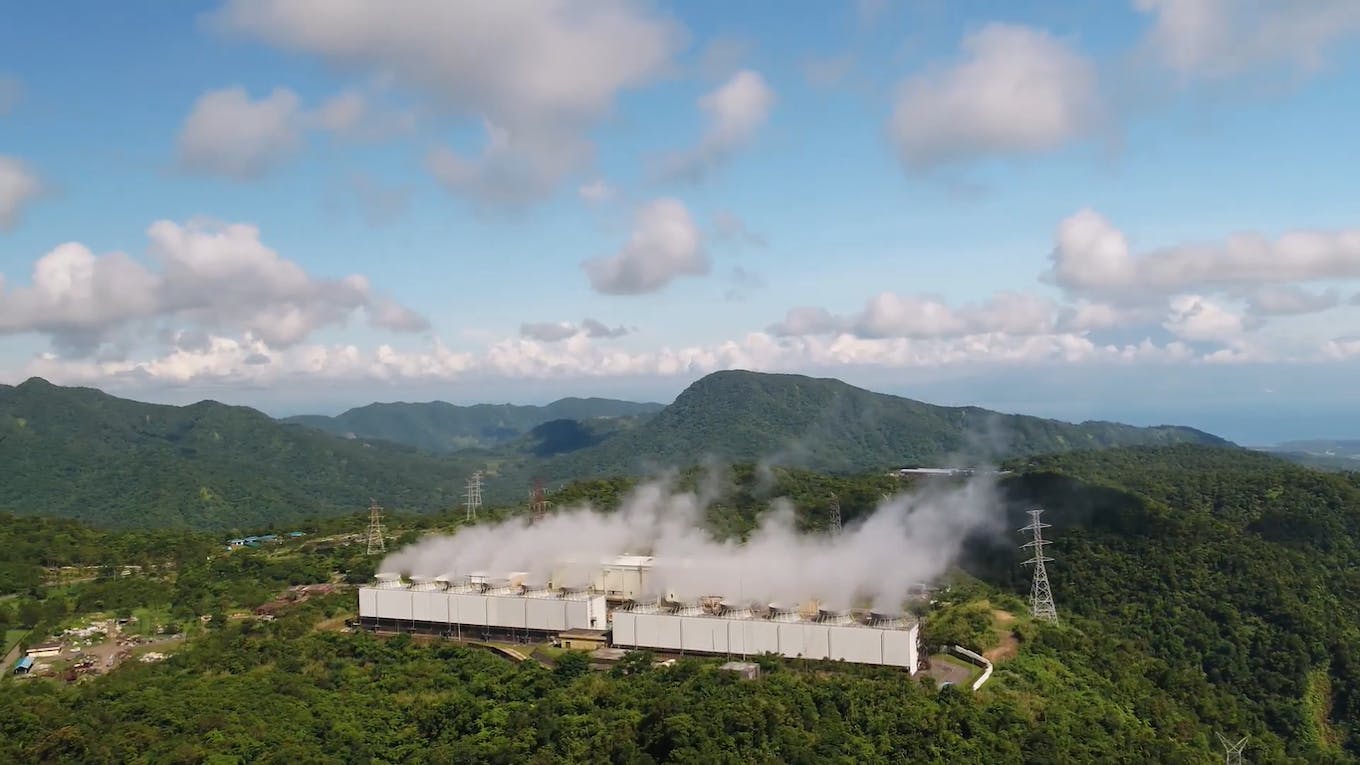
EDC’s Bacon-Manito Geothermal Power Plant that straddles between Albay and Sorsogon in Bicol region. Image: EDC
For EDC – which also operates hydro, solar, and wind power plants – renewable energy’s prospects are bright in the country that has pushed for the clean energy transition and only recently ushered in a new administration that looks keen to continue the policy.
“Laws and policies are already in place to support RE investors. With the new administration’s declaration that it will prioritise renewable energy, we hope more investors will be encouraged to go into RE not only because it’s good business but also because it is good for our country and for the environment,” Barcena said.
In its Integrated Report released in 2021, EDC notes that the Retail Competition and Open Access and the Green Energy Option Program – mechanisms that allow big power users to choose their electricity suppliers – are creating RE opportunities in the country. It adds that tax and other incentives provided for under the Renewable Energy Act of 2008 make the market more attractive.
The company tells Eco-Business that the best strategy would be to increase the share of RE in the power mix – “not only because it is indigenous, but also because it will help the country reduce carbon emissions”.
“Any source of RE is still better than fossil fuels,” Barcena said.

